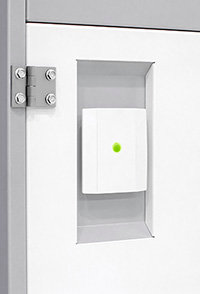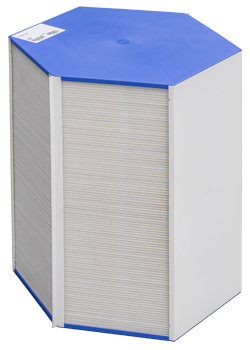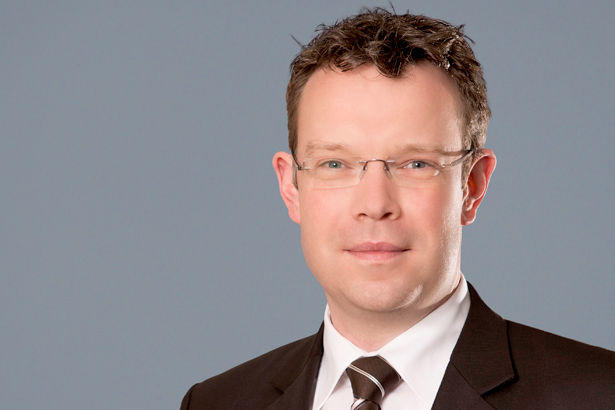For improved room climate in classrooms
As a result of the coronavirus pandemic, a host of measures have been put in place to reduce the risk of infection. They include the Hands-Face-Space rule designed to encourage social distancing, the wearing of masks in everyday life, and ventilation to prevent the potential transmission of the virus.
The spotlight in society has fallen on the risk of infection is schools, particularly in full classrooms. There are also discussions about filtering air, and increasingly the need for air exchange in classrooms by an appropriate school ventilation system. A healthy indoor climate is about more than just ensuring virus-free air: the oxygen and/or CO2 concentration and the air humidity also need to be controlled.
There is a massive need to fit adequate ventilation in classrooms and provide good indoor air conditions. However, this need can only be met by systems designed to be retrofitted into existing schools.
Where are we currently with school buildings?
Centralised ventilation units are now an integral feature of the tenders for new school buildings. But it is generally difficult to install centralised air handling units into existing buildings. The incursion into the structure of the building would be too costly and extensive. However, decentralised ventilation units present a solution that is in no way inferior to centralised ventilation technology. The major benefit of decentralised units, like the Kampmann WZA: the structural work is many times less.
What are the construction benefits decentralised units?
The decentralised school ventilation unit WZA is installed separately in every classroom. There is virtually no disruption to the operation of the school as the construction work only takes place in the respective classroom and is stand-alone from the heating system installed. Only an opening through the shell of the building is required if the decentralised ventilation unit is to be fitted as a wall-mounted unit. Alternatively the overhead light on the front of the unit can be replaced. This work, including drilling through the shell and commissioning, needs to be done by a specialist heating installer.
New decentralised ventilation unit WZA
The top benefit of this new Kampmann product is its “plug-and-go” solution. No electrician is needed to install the compact school ventilation unit WZA, as it is ready to use as soon as it has been positioned in place. All air deflections with shut-off dampers are factory-wired. This is a marked difference to many other models on the market. The outer dimensions of the unit are compact: 150 (W) x 66 (D) x 210 (H) cm. The range also includes different colour options, enabling the unit to be adapted to the interior design scheme. A CO2 sensor and the appropriate configuration of the air volumes guarantee compliance with the relevant standards and comfortable operation.
Safety is a priority here: the school ventilation unit can be connected to an in-situ fire alarm system.
The unit weighs approx. 400 kg and is designed as two parts: a lower heat recovery unit and an upper functional unit containing all the electrical components and the outside air filter. The “two-part” design of the unit makes it easy to deliver and set up, including the additional casing.
Operation and operating modes
The decentralised ventilation unit WZA features four ventilation stages plus standby mode, which can be scrolled through using a colour-coded button:
Standby
- Unit is off
- when the CO2 concentration in the classroom exceeds 600 ppm, the unit automatically switches to automatic ventilation
White - Automatic ventilation
- for everyday operation
- automatic and continuously variable control of the air volume according to the CO2 concentration in the classroom
- the unit switches automatically to standby mode when the CO2 concentration is below 500 ppm for at least 2 hours and thus a good air quality has been restored
Magenta - Level 1
- the unit delivers an air volume of 800 m³/h for 8 hours, regardless of the ventilation requirement based on the CO2 concentration in the classroom
- this function is useful for infection protection, as is required during pandemics and flu outbreaks, and ensures that there is always an adequate air exchange
- at the end of 8 hours, the unit switches automatically back to automatic ventilation
Turquoise - Level 2
- reduced low-level operation
- suitable for examination times etc.
The one-touch operation button enables users to operate the unit intuitively and simply. If there is a need to adapt the unit to specific uses, all the run times and values can be subsequently parametrised on the online interface. A key feature of the school ventilation system is its low sound level due to the sophisticated insulating lining in the basic unit and in the housing. This guarantees quiet operation.
Ease of maintenance
The design of the decentralised ventilation unit WZA is convenient and thus provides for ease of maintenance. In most cases, maintenance can be done by the school caretaker who can read off any error messages. There is therefore no need to call in specialist tradespeople.
The design of the upper part of the unit enables the fan to be simply pulled out in a “drawer” for inspection and revision purposes. The outside air filter is also easily accessible and can be replaced with ease.
Trouble-free operation is ensured in normal conditions and operation in outside temperatures of as low as -10 °C, thanks to the use of an enthalpic heat exchanger. As no condensate is produced in the unit, there is no need to connect it up to a sewage system. There is also no need for a condensate pump.
A further important aspect has been considered for operation of the unit in schools: the housing. It is accident-proof, robust and so insusceptible to vandalism.
No dry mucous membranes thanks to the enthalpic heat exchanger
The enthalpic heat exchanger fitted in the school ventilation unit ensures that a large part of the room air humidity and heat or cold can be recovered from the extract air/exhaust air. This prevents energy losses and reduced air humidity, with ensuing environmental and economic benefits. The health aspect for the people working in the room is also very important. Especially in winter, rooms are often insufficiently humid because of dry heating air. This can lead to dry mucous membranes, which have been shown to encourage infections. These quality features distinguish the Kampmann unit quite significantly from other decentralised ventilation units on the market.
Other solutions for optimum room air in classrooms and school buildings
Kampmann has been offering its air purifier KA-520 since mid-2020. This is an ideal solution for closed rooms without centralised or decentralised ventilation systems. The KA-520 is a portable plug-&-play stand-alone unit with an extremely large filter surface. 99.995 % of all viruses and germs are filtered out of the air, thanks to its H14 HEPA filter. The KA-520 XL Pro, which is capable of cleaning up to 720 m³/h of ambient air with low noise levels, is ideal for educational and public facilities.
What now?
A strong partner that can offer professional advice is the most important factor. I look forward to your call or e-mail enquiry about decentralised school ventilation.
|
Thorsten Niehoff +44 1932 228592 |







